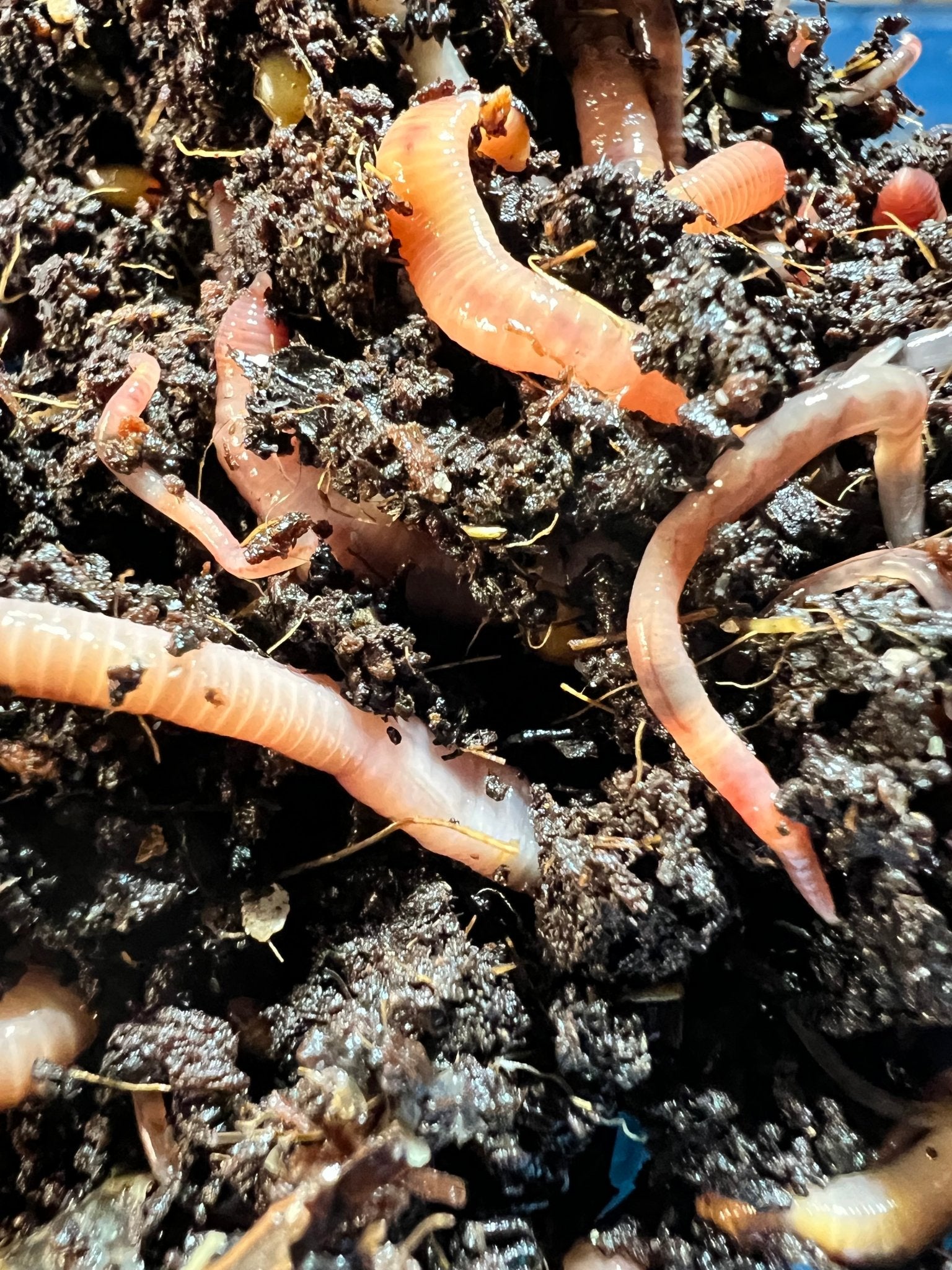Trust Red Wiggler Express for Reliable and Top-Notch Lawn Care Options
Trust Red Wiggler Express for Reliable and Top-Notch Lawn Care Options
Blog Article
Open the Tricks of Red Wigglers: Your Overview to Composting Success
The assimilation of red wigglers right into composting techniques offers a substantial possibility for enhancing dirt health and wellness and advertising sustainability. These microorganisms are not simply effective recyclers of organic waste; they provide a myriad of benefits that can change yard monitoring. Comprehending their demands and behaviors is vital for optimizing their capacity, from establishing an ideal worm bin to feeding them the appropriate materials. As we check out the crucial components of effective vermicomposting, one may question how these small animals can cause a much more dynamic and productive yard environment.

What Are Red Wigglers?
(Lake Rhodhiss Bait)Red wigglers, scientifically referred to as Eisenia fetida, are a varieties of earthworm mainly made use of in composting because of their remarkable capacity to break down natural matter successfully. These worms are defined by their reddish-brown pigmentation and a segmented body, typically determining between 3 to 4 inches in length. Unlike various other earthworm types, red wigglers grow in rich, natural environments, making them excellent for vermicomposting systems.
Belonging To The United States And copyright, they are frequently located in decaying leaves and garden compost piles, where they play a critical role in nutrient recycling. Their adjustment to staying in a moist, cardiovascular setting enables them to take in huge quantities of organic waste, simplifying right into nutrient-rich castings that improve dirt wellness.
Red wigglers reproduce rapidly, with a single worm capable of creating a number of cocoons each week, each including numerous hatchlings. Comprehending the biology and behavior of red wigglers is necessary for optimizing their possibility in composting applications.
Benefits of Using Red Wigglers
Utilizing the power of red wigglers in composting provides countless advantages that boost dirt wellness and advertise lasting waste administration. These exceptional organisms effectively break down raw material, changing cooking area scraps and backyard waste right into nutrient-rich vermicompost. This completed item is extremely advantageous for plant growth, as it improves dirt framework, boosts wetness retention, and enhances nutrition schedule.

(Red Wiggler Express)Additionally, the visibility of red wigglers in your composting system can increase the composting process, producing high-grade compost in a portion of the time contrasted to standard methods. The castings produced by these worms are additionally including beneficial bacteria that further improve the soil ecological community.
Setting Up Your Worm Container
Developing a reliable worm bin is an uncomplicated process that can dramatically enhance your composting initiatives. The first step is picking a suitable container. Worm containers can be made from plastic storage bins, wood boxes, or readily offered worm containers. Make sure the container has sufficient water drainage and ventilation holes to preserve optimum wetness degrees and air flow.
Following, prepare the bed linens material, which acts as the worms' habitat. A mix of shredded paper, cardboard, and coconut coir functions well, offering a comfy atmosphere for the worms. Purpose for a bedding depth of about 4-6 inches. their explanation Moisten the bed linen gently, guaranteeing it looks like a damp sponge without excess water merging at the bottom.

Feeding Your Red Wigglers
To ensure the wellness and efficiency of your red wigglers, it is important to provide them with a well balanced diet that fulfills their nutritional demands. Red wigglers flourish on a varied range of organic products, which not only provide needed nutrients but likewise promote effective composting.
Start by integrating kitchen scraps such as vegetable peels, fruit cores, and coffee premises. Prevent citrus fruits, onions, and garlic, as these can be detrimental to worm health and wellness. Additionally, introduce shredded paper, cardboard, and completely dry leaves to develop a well-aerated environment.
Feeding regularity need to be checked; typically, worms can eat half their body weight in food weekly. It is important to stay clear of overfeeding, as excess food can result in undesirable smells and attract bugs. A great method is to include food in percentages, permitting worms to refine it before introducing extra.
Maintaining wetness degrees is likewise vital; the bed linen needs to perspire but not soggy. Be sure to on a regular basis examine the temperature level and pH degrees of the bin to ensure an optimal environment for your red wigglers, ultimately improving their composting effectiveness.
Harvesting and Using Garden Compost
An effective composting procedure with red wigglers finishes in the abundant, dark compost known as vermicompost, which can significantly boost dirt health and wellness and plant growth. Gathering this nutrient-dense product usually takes place every 3 to six months, depending on the dimension of your system and the quantity of organic issue being refined.
To harvest, carefully different the compost from the worms and any undecomposed products. One efficient method includes moving the materials of the bin to one side and including fresh bedding and food to the vacant area, encouraging the worms to move. After a few days, the garden compost can be gathered from the contrary side.
It is necessary to use vermicompost correctly to optimize its benefits. It can be utilized as a top clothing for yard beds, blended right into potting soil, or made into a nutrient-rich fluid fertilizer recognized as "worm tea." This application method aids to deliver crucial nutrients directly to plant origins, promoting much healthier development. By integrating vermicompost right into your gardening program, you not only recycle natural waste but likewise develop a flourishing ecosystem that supports lasting gardening methods.
Conclusion
In recap, red wigglers work as exceptional allies in composting efforts, changing natural waste right into nutrient-rich vermicompost (Red Wiggler Express). Their unique biological qualities and effective waste handling capacities contribute considerably to sustainable gardening methods. By recognizing the optimum problems for their environment, feeding requirements, and compost harvesting techniques, gardeners can enhance soil health and wellness and advertise plant vigor. Accepting vermicomposting not just minimizes land fill waste yet additionally cultivates an extra eco liable strategy to horticulture and source monitoring.
Report this page